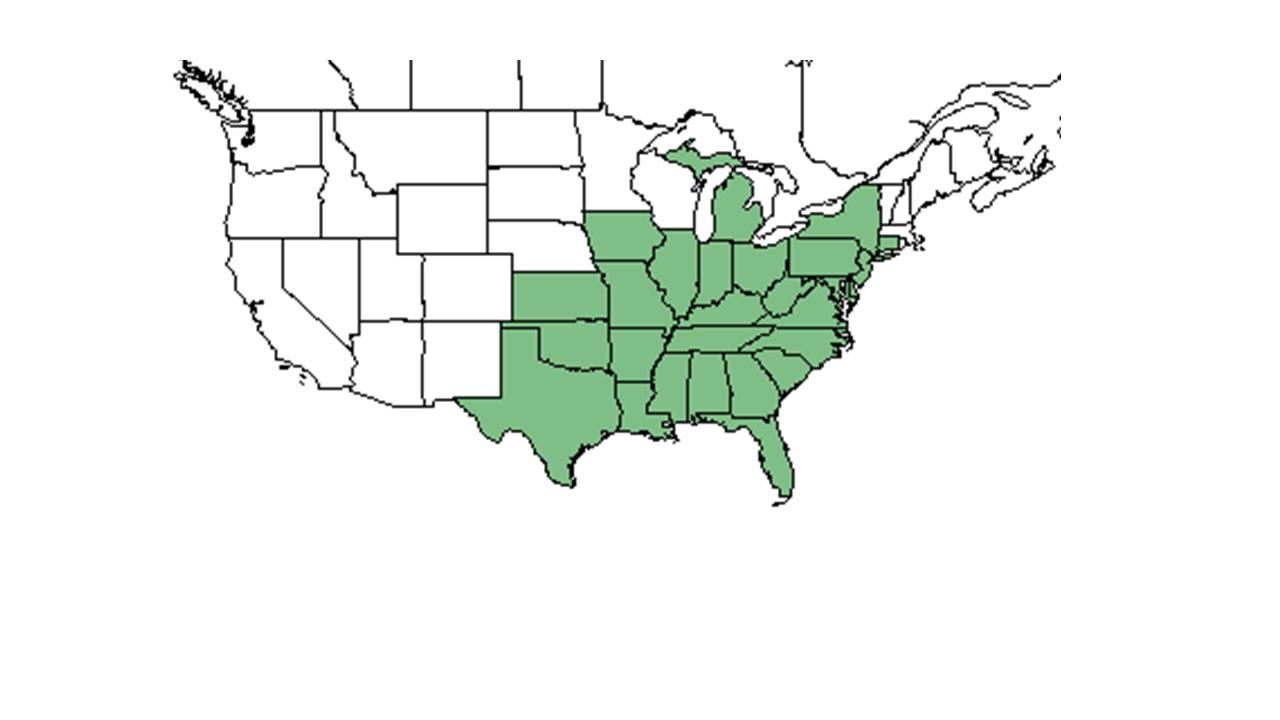Difference between revisions of "Endodeca serpentaria"
| Line 33: | Line 33: | ||
===Habitat=== <!--Natural communities, human disturbed habitats, topography, hydrology, soils, light, fire regime requirements for removal of competition, etc.--> | ===Habitat=== <!--Natural communities, human disturbed habitats, topography, hydrology, soils, light, fire regime requirements for removal of competition, etc.--> | ||
| − | This species grows in mesic woodlands, rich mixed woodlands along creeks, wooded floodplains, and hardwood slopes. It is found in floodplains or slopes in soils varying from dry to wet sandy loam. This species has also been spotted in disturbed areas such as fire breaks. It thrives in shaded environments as well.<ref name=fsu>Florida State University Robert K. Godfrey Herbarium database. URL: http://herbarium.bio.fsu.edu. Last accessed: June 2014. Collectors: L. C. Anderson, R. R. Clinebell II, R. K. Godfrey, and M. Jenkins. States and Counties: Florida: Calhoun, Gadsden, Jackson, Lafayette, and Leon. Georgia: Thomas.</ref> | + | ''E. serpentaria'' is commonly found in mesic to dry forests, where it is more likely restricted to mesic areas over acidic substrates, and ranging into drier soils over calcareous or mafic substrates as well.<ref name= "weakley"/> This species grows in mesic woodlands, rich mixed woodlands along creeks, wooded floodplains, and hardwood slopes. It is found in floodplains or slopes in soils varying from dry to wet sandy loam. This species has also been spotted in disturbed areas such as fire breaks. It thrives in shaded environments as well.<ref name=fsu>Florida State University Robert K. Godfrey Herbarium database. URL: http://herbarium.bio.fsu.edu. Last accessed: June 2014. Collectors: L. C. Anderson, R. R. Clinebell II, R. K. Godfrey, and M. Jenkins. States and Counties: Florida: Calhoun, Gadsden, Jackson, Lafayette, and Leon. Georgia: Thomas.</ref> |
===Phenology=== <!--Timing off flowering, fruiting, seed dispersal, and environmental triggers. Cite PanFlora website if appropriate: http://www.gilnelson.com/PanFlora/ --> | ===Phenology=== <!--Timing off flowering, fruiting, seed dispersal, and environmental triggers. Cite PanFlora website if appropriate: http://www.gilnelson.com/PanFlora/ --> | ||
Revision as of 14:34, 6 May 2019
| Endodeca serpentaria | |
|---|---|

| |
| Photo taken by Gil Nelson | |
| Scientific classification | |
| Kingdom: | Plantae |
| Division: | Magnoliophyta - Flowering plants |
| Class: | Magnoliopsida – Dicotyledons |
| Order: | Aristolochiales |
| Family: | Aristolochiaceae |
| Genus: | Endodeca |
| Species: | E. serpentaria |
| Binomial name | |
| Endodeca serpentaria L. | |

| |
| Natural range of Endodeca serpentaria from USDA NRCS Plants Database. | |
Common names: Turpentine-root, Virginia snakeroot, Serpent birthwort
Contents
Taxonomic notes
Synonyms: Aristolochia serpentaria (L.); A. hastata Nuttall; A. serpentaria L. var. hastata (Nuttall) Duchartre; A. convolvulacea Small; Endodeca hastata (Nuttall) Rafinesque
Description
A description of Endodeca serpentaria is provided in The Flora of North America. The variation of this species needs to be further studied.[1]
Distribution
It is found as north as Connecticut, west to Illinois, and south to central peninsular Florida, then west to Texas.[1]
Ecology
Habitat
E. serpentaria is commonly found in mesic to dry forests, where it is more likely restricted to mesic areas over acidic substrates, and ranging into drier soils over calcareous or mafic substrates as well.[1] This species grows in mesic woodlands, rich mixed woodlands along creeks, wooded floodplains, and hardwood slopes. It is found in floodplains or slopes in soils varying from dry to wet sandy loam. This species has also been spotted in disturbed areas such as fire breaks. It thrives in shaded environments as well.[2]
Phenology
Generally, this species flowers from May until June and fruits from June until July.[1]
Conservation and management
Cultivation and restoration
Photo Gallery
References and notes
- ↑ 1.0 1.1 1.2 1.3 Weakley, Alan S. Flora of the Southern and Mid-Atlantic States: Working Draft of 21 May 2015. University of North Carolina Herbarium (NCU). PDF. 127.
- ↑ Florida State University Robert K. Godfrey Herbarium database. URL: http://herbarium.bio.fsu.edu. Last accessed: June 2014. Collectors: L. C. Anderson, R. R. Clinebell II, R. K. Godfrey, and M. Jenkins. States and Counties: Florida: Calhoun, Gadsden, Jackson, Lafayette, and Leon. Georgia: Thomas.